Alternatives to maps
2024-03-21
Plan
When is a map not appropriate for geospatial data?
Tile geometry
Heatmaps with dendrograms
Specialized heatmap for the USA
Population maps
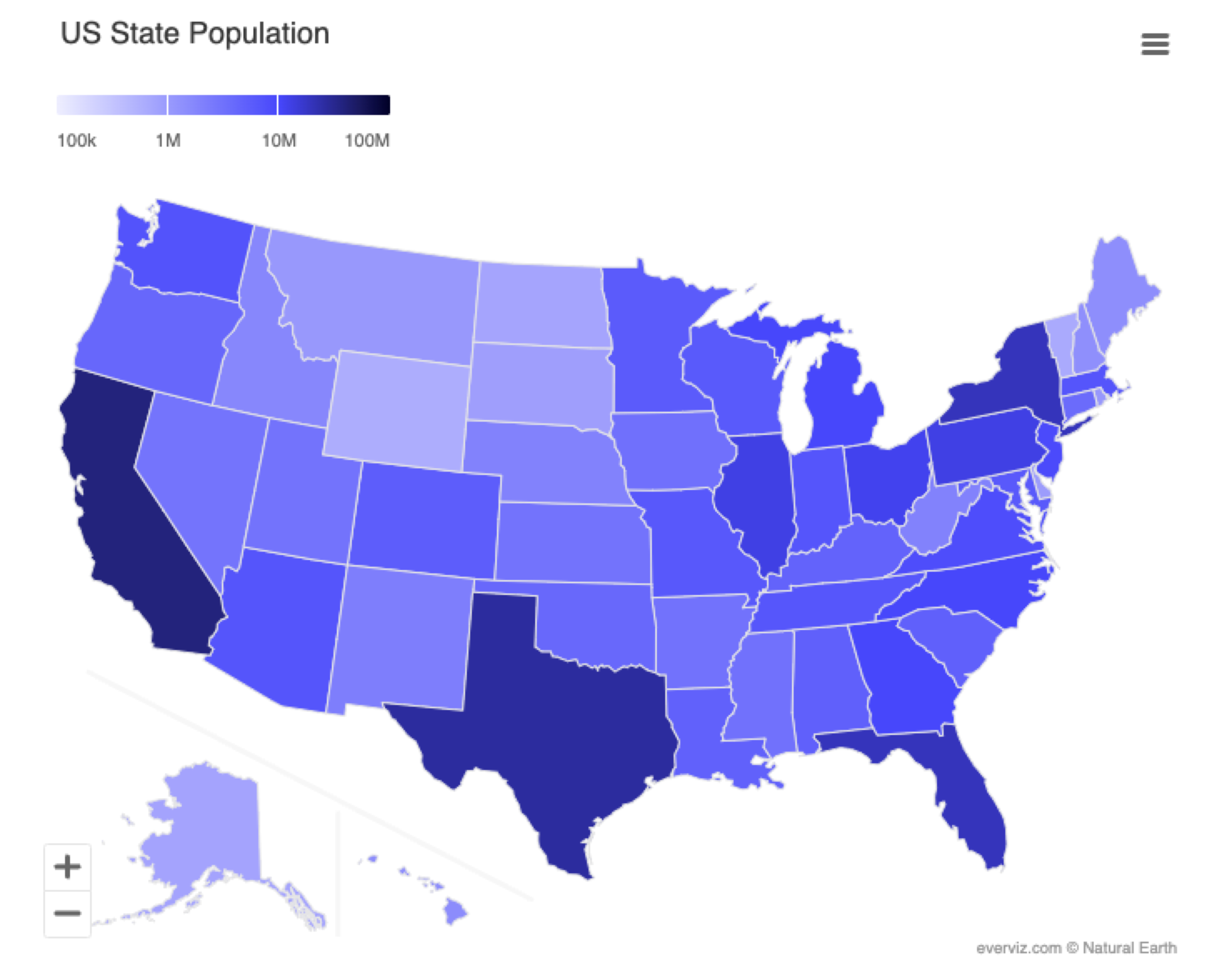
USA population by state
https://www.everviz.com/chart-examples/choropleth-categories-point-and-pattern-fill-maps/us-state-population-choropleth-map/
Population maps II

USA population by county
https://www.census.gov/library/visualizations/2010/geo/population-density-county-2010.html
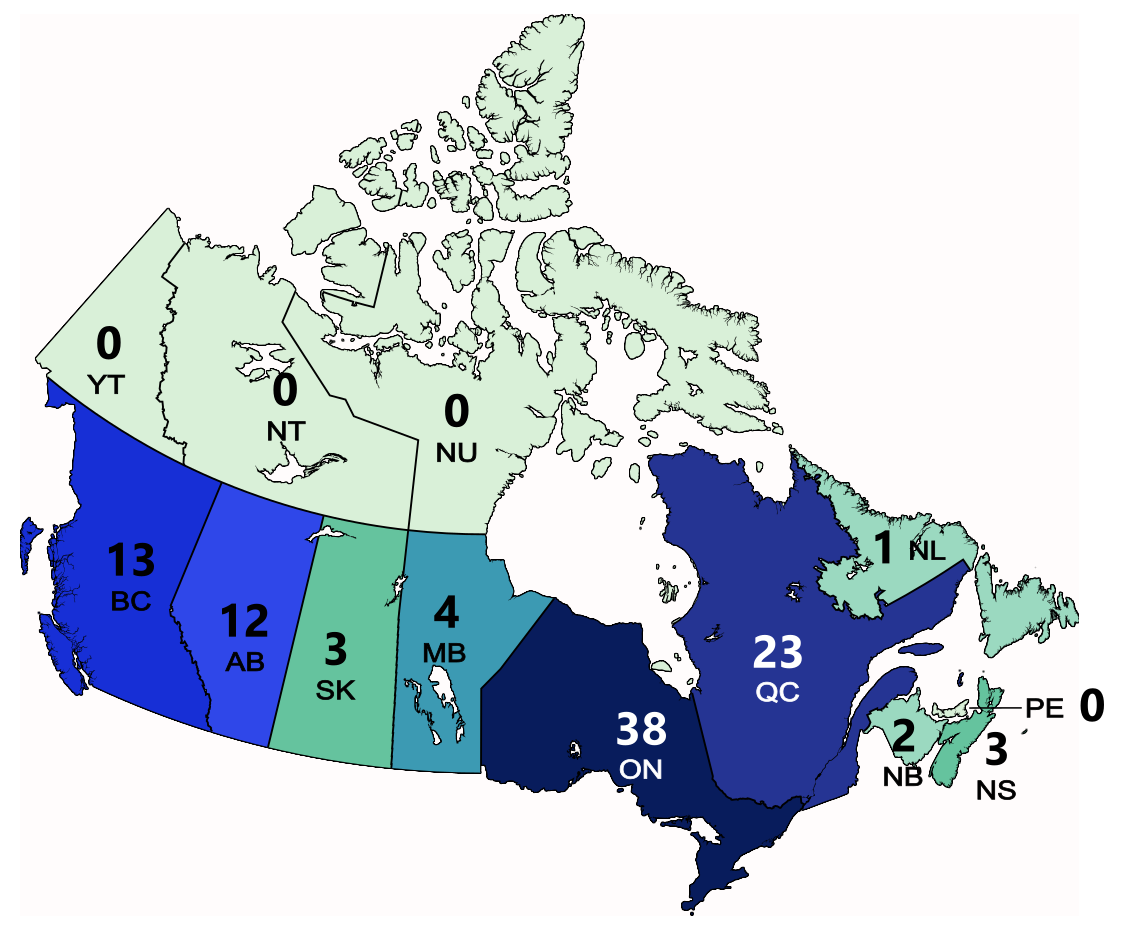
Canada population
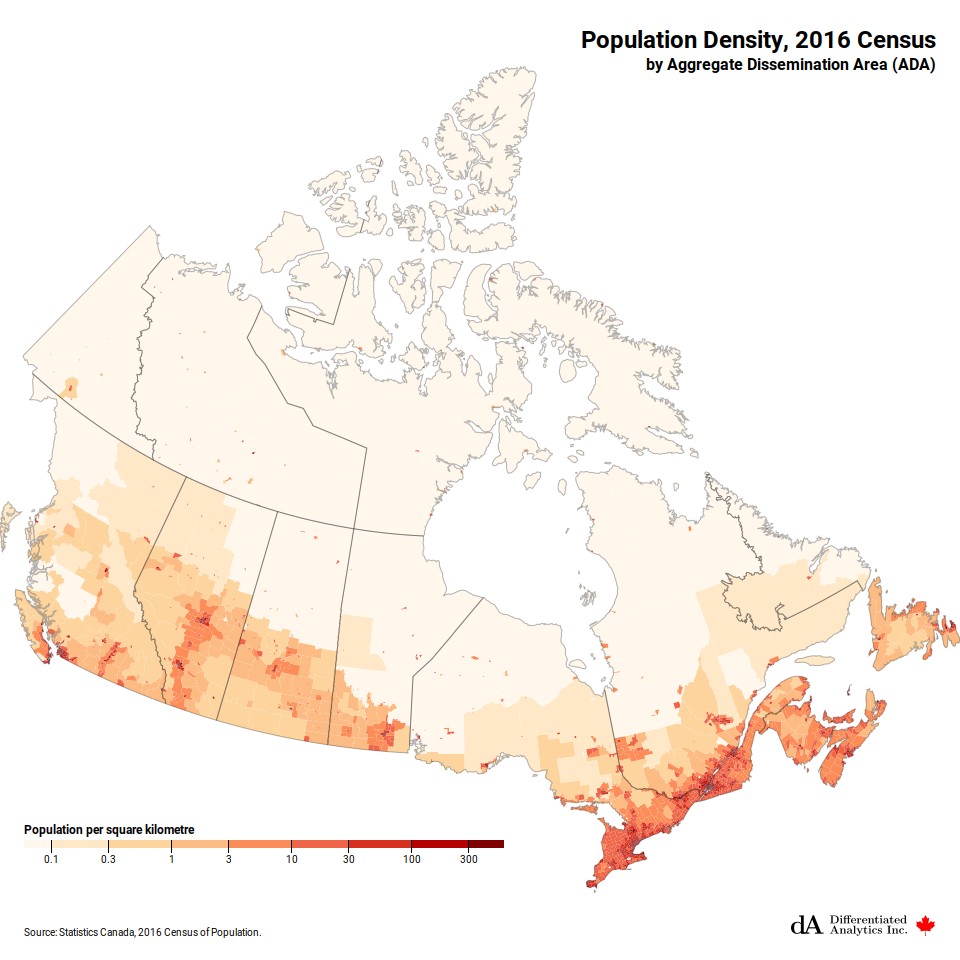
Canada population
Population maps III
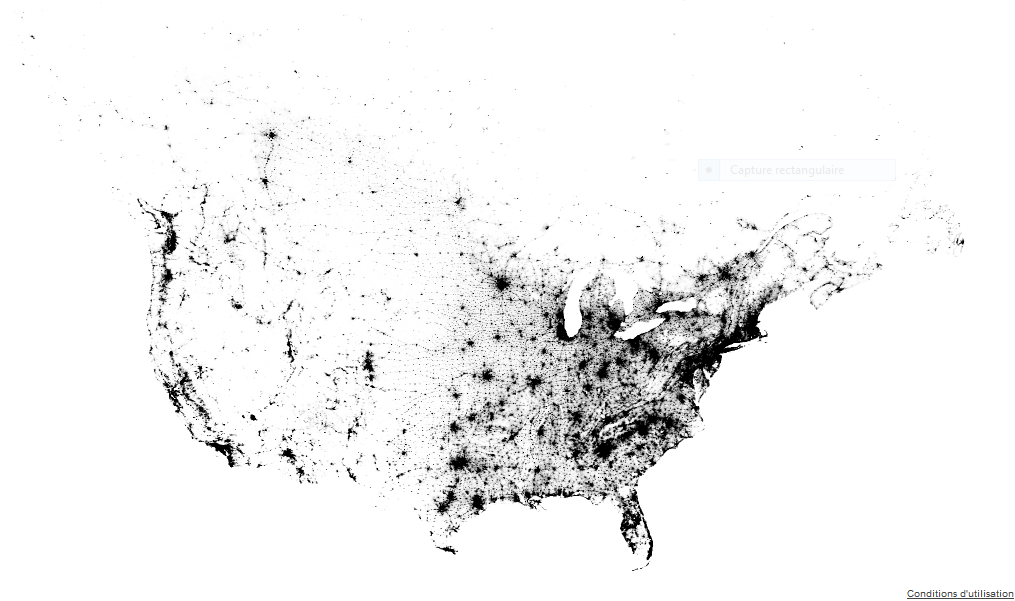
Canada USA population dot map
https://flowingdata.com/2012/12/31/map-of-every-person-counted-in-2010-us-census/
Nighttime image of Earth

NASA composite image of night time North America
Why shouldn’t I use a map?
Always think about the purpose
Is geography the most important feature?
Are you showing points or areas?
Is your map approximately a population map?
Will the area of a region complicate interpretation?
Is the spatial extent one dimensional? What could you do with the other dimension?
COVID-19 cases & geom_tile
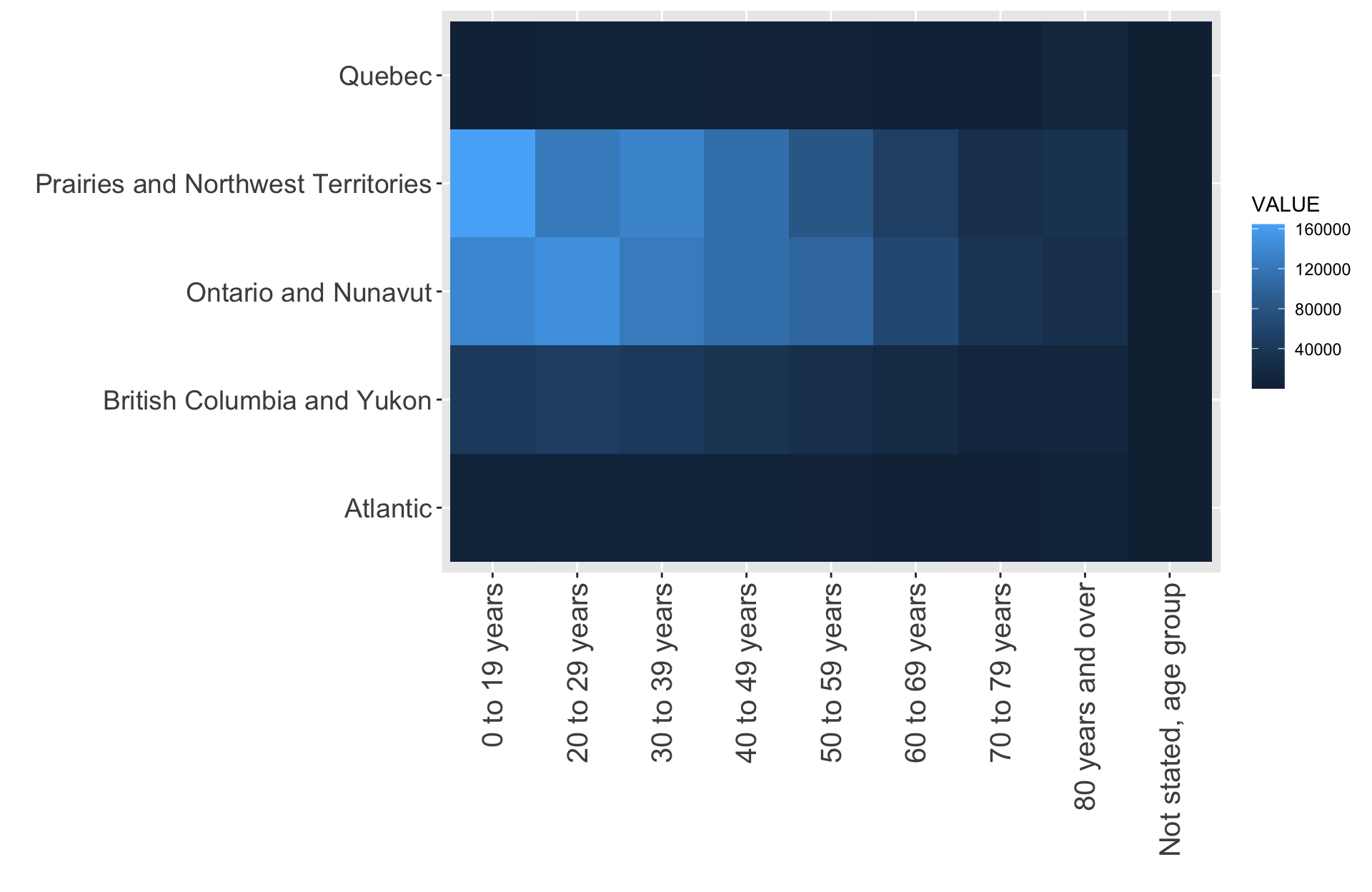
Specialized maps of USA
Specialized maps of USA

Summary
Maps are very effective for showing points where spatial location is the primary information
To show quantitative data varying along a transcect, a line or dot plot may be better
Colour shows larger/smaller, positive/negative, but does not show quantitative values well
Heatmaps (2 dimensional tiles of colours) can be a good alternative
Further reading
Course notes
Healy Chapter 7